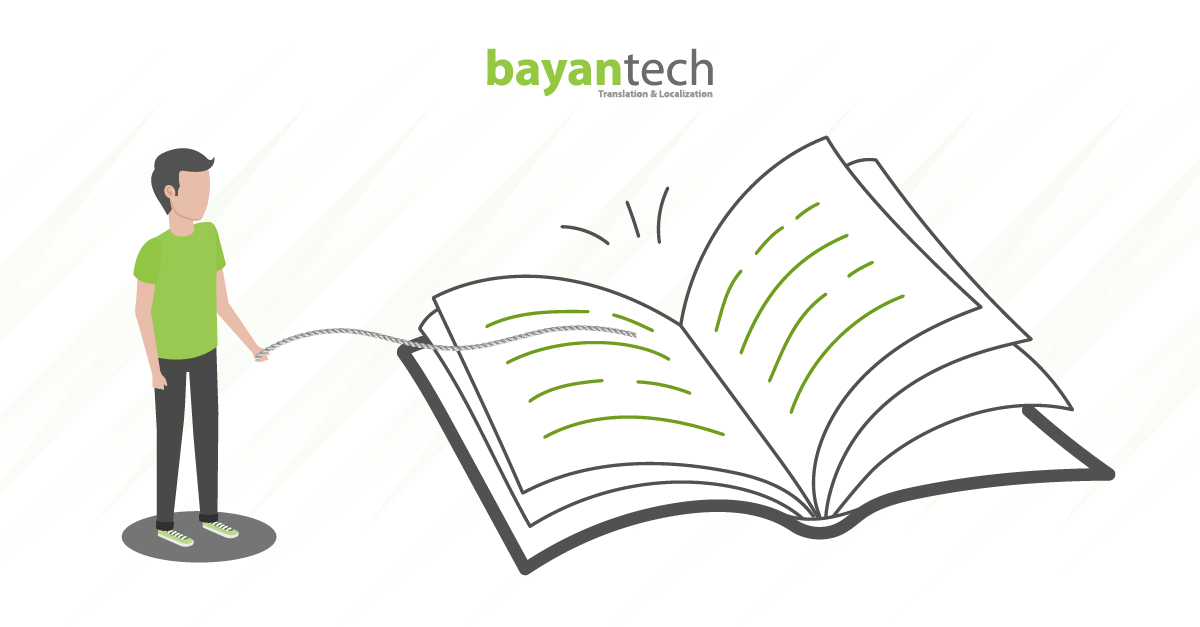Before we get to the actual process of working on copywriting projects, we might as well start with why businesses need copywriting projects.
Well, these days, copywriting is a rapidly-growing concept in business, advertising, and marketing. The inevitable necessity of it aims at communicating with people, appealing to their needs, and providing services or products. Thus, it isn’t just about stuffing words together to “sell” a product or a service; no, no, it’s more subtle than this. These words should reach out, communicate, and inform to convey an idea, trigger emotion, a need, and eventually to provide a solution.
To cut it short, copywriting is your message to your customers and potential customers. “Copywriters are the ones who write messages but mold them in a way that it brings about an interest in a costumer”, said Linda Lake in her book. This communication means you understand your audience and their needs, which consequently adds value to your service/product, enhances the audience’s perception of it, and ultimately boosts your brand image. Putting this all together equals achieving your market objectives, and this is what marketing is all about.
Now, something as crucial as this needs to be effectively, flawlessly executed. Your entire expanding plans or marketing goals could hinge on an optimized workflow where teams collaborate to accomplish the mission.
In this blog post, you will learn more about the 5-step process to master copywriting projects.
Step 1: A Discovery Session
As its name suggests, this particular step is like launching an exploration spaceship to investigate and examine. In this session, the project manager meets with the client where they review and analyze the project. The aim is to establish an in-depth understanding of the project, its objectives, and requirements.
Sometimes, the client might not be able to figure out a definite outlook or a specific approach of his/her project. This is where the discovery session comes in; it offers the client the assistance and professional guidance in brainstorming and developing creative and innovative approach. Besides, while some people request that the content should be provided in one language, others might request a translation of the content into different languages for marketing purposes- which in that case requires both copywriting and marketing translation.
Step 2: A Copywriting Project Brief
Once all the valuable data is collected, a project brief, a follow up to the discovery session, is created, summarizing and organizing the data, aka the expectations, of the project. This project brief is sent along with the quote packet for the client’s review and approval. The approval here means that a mutual understanding of the project is shared by the client and the business partner.
Here’s the list of the essential inquires discussed and answered for the copywriting project. Working on a project
without such list is simply a huge no.
Scope of the Project Size.
- The Target Audience.
- Marketing Goals.
- Tone
- Key Content.
- Timeline Requirements of the Project (including the dates for draft delivery, client review opportunities, regularly scheduled progress or status meetings).
- Budget of the Project
If you aren’t asked to provide such information, it’s a sign you are getting your copywriting project in the wrong hands.
Step 3: Copywriter Selection
The project manager, now, not only has the client’s approval, but also has a clear vision of the project. Those are the green lights to go ahead and get to the actual copywriting part. It kicks off once a copywriter is assigned the project, which brings up a really good question: can any copywriter do any project?
Well, the answer isn’t as simple as the question. Copywriting is both an art and a science… Cliché, we know! Still, it doesn’t make it any less true. So, the fact that a copywriter is a versatile craftsman is relatively true. That’s not the answer, though.
For copywriting, it’s of huge importance to focus on the experience within the niche. For instance, a marketing copywriter isn’t the fittest choice for a technical copywriting project. That’s why, a project manager doesn’t just assign the project to a copywriter randomly; it’s more sophisticated than that. A stringent selection phase takes place where the project manager assigns the project to a qualified copywriter with subject matter expertise.
Copywriter selected, check. Let the copywriting begin!
Step 4: Copywriting… and More!
With the writing part kicking off, the idea is to create a concept that relates to the product or service. This is the atom of the whole project, and from this point, the copywriter starts branching it out. The concept evolves and links what the customer needs with what your business can offer with quality writing and rich content. This all happens in accordance with the instruction and requirements previously discussed with the client.
Doing the writing part means we are half way through the project. Food for thought: a copywriting project isn’t just about words!
We are talking here about technicality, designing services such as Desktop Publishing, translation, SEO strategies, and others. The type of content provided and services carried out depends on the type of the project itself. There are two main types of copywriting projects; each has its own requirements, depending on the purposes:
Copywriting for Print ( such as brochures)
Copywriting for Web (also known as Web Content Copywriting, such as blog posts and websites)
- Copywriting for Print:
For this type, content should be brief and functional. However, it can’t do without visuals. The main purpose of a brochure, for instance, is inviting the customers to read and get the overall message from just a glimpse, through compelling content and enticing visuals. This content might be intended to a diversity of audience, which calls then for marketing translation and localization.
So, after the writing part is done, there comes the translation part and creating a multilingual document, and this where another equally essential part is involved, the designing part which includes Desktop Publishing services. Copywriters and translators will then hand the task to DTP specialists and graphic designers who are concerned with the general format and view of the print. Their work includes adjusting text expansion, colors, graphics, and others. It’s considered to be a complex process, but experience and innovation brings about the needed impact to your brand.
- Web Content Copywriting:
Due to the rapidly increasing digital competitiveness in our world, web content is conquering the writing arena. Writing for the internet, however, is different than writing a glossy rack brochure. For a website, content should be well-organized, highly functional, and smartly hyperlinked. Not only that, but the web content should be concise and relevant so that customers can smoothly find what they are looking for, and accordingly enhancing the user experience.
Implementing SEO (Search Engine Optimization) strategy with focused keyword and conducting SEO friendly website is another essential goal of your web content project. This helps in creating content findable and searchable by your users. Managing to create the successful formula of a killer fresh content and perfect SEO results in an impressive amount of interaction, an added value to your product or service, and eventually a boost to your sales. The SEO process, however, is becoming sophisticated more and more with search engines’ constant updates, and only few with experience and skill can keep up with these changes to increase traffic and rankings.
Step 5: A Draft for Review
A draft is ready by now to be edited, reviewed, and proofread, in order to finally be sent to the client for a review. The copy should be proven to be of a native feel and grammatically and structurally flawless. Sometimes, a progress/status meeting is held to discuss the draft which may generate suggestions from the client’s side and recommendations from your partner’s side. Based on this meeting, a final draft is prepared to ultimately wrap up your copywriting project.
Conclusion
Having a copywriting project can provide a giant leap forward for your business. That’s why you should partner with a provider that understands the potentials of the project and eventually transforms them into a brilliant work piece, speaking to the mind and needs of a customer.
With our 5-step workflow, BayanTech provides a strategic process to work on your copywriting project, making sure it is seamlessly executed. We believe that words powerfully matter; that’s a priority. However, copywriters aren’t the only ones involved. Our league of professional DTP specialists, graphic designers, SEO specialists, and engineers cooperate to get your project done, using the most tech-savvy tools.
Our quarterbacks, the project managers, are determined to listen to you and put your vision and voice into a creative, compelling message, no matter what field you are requesting.
To learn more about BayanTech, contact us.









